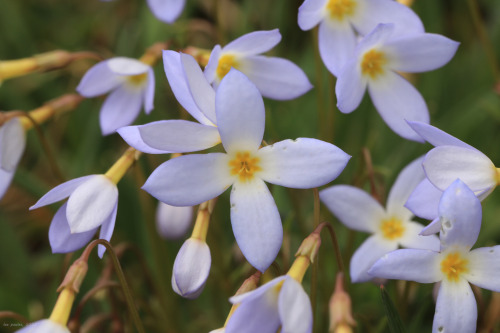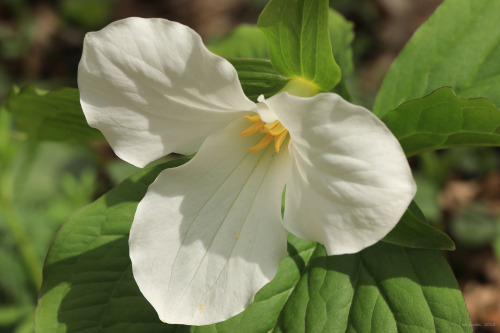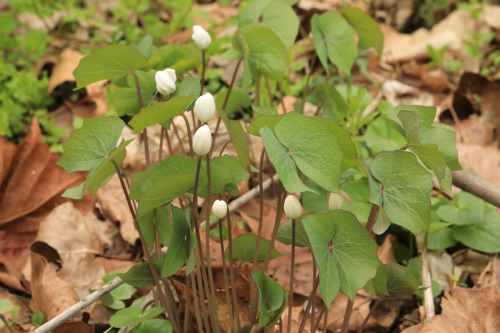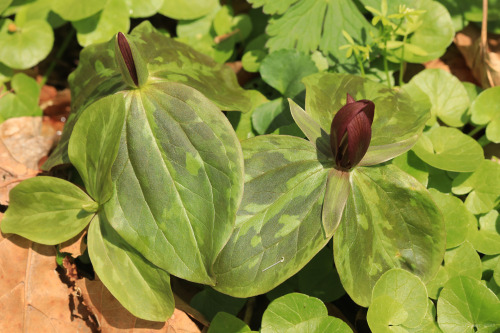#sessile trillium
In honor of fishdetective, yet another barrage of tiny flower close-ups - courtesy of the riparian habitat along Dunkard Creek.
From top: early saxifrage (Micranthes virginiensis); azure bluet (Houstonia caerulea), also known as Quaker ladies; Dutchman’s breeches (Dicentra cucullaria); great white trillium (Trillium grandiflorum); swamp buttercup (Ranunculus septentrionalis); twinleaf (Jeffersonia diphylla); and sessile trillium (Trillium sessile), also known as toadshade and toad trillium.
Field Notes:
1. Early saxifrage is most at home in the moist cracks and crevices of rock outcroppings, but occasionally takes to streambanks. All the saxifrages are quite beautiful and many are edible, although somewhat bitter-tasting.
2. Although botanists dispute whether or not swamp buttercup is a distinct species from hispid buttercup (Ranunculus hispidus), both plants are capable of producing striking pops of yellow color along seeps and springs from mid-spring to early summer. Our native buttercups can be distinguished from the infamously-invasive creeping buttercup (Ranunculus repens) by their upward growth habit, more deeply-cleft leaves, and lack of white blotches on the leaves.
3. Easily identified by its twin-lobed leaves resembling angel wings, twinleaf is one of Appalachia’s most unusual wildflowers. The plant’s fragile, white flowers have a very short bloom period (less than a week), in part because the petals are easily blown apart by the slightest breeze. Twinleaf is extremely picky about where it grows and is becoming increasingly rare throughout its range.
4. How could you not love a plant with the name of “toadshade”? I always lift the bracts just to check.
Post link










